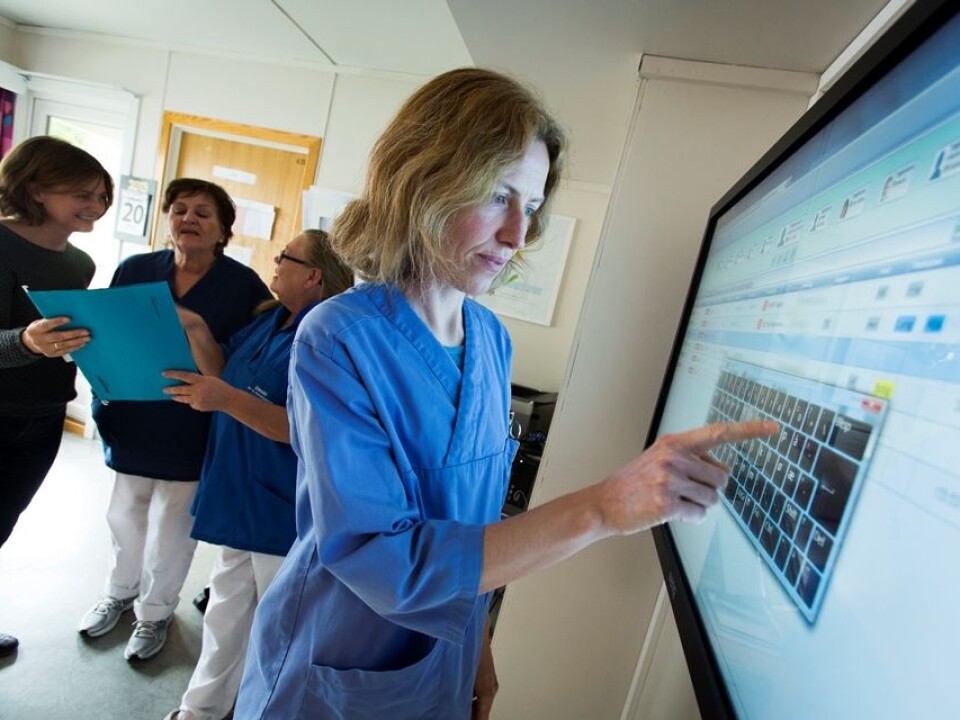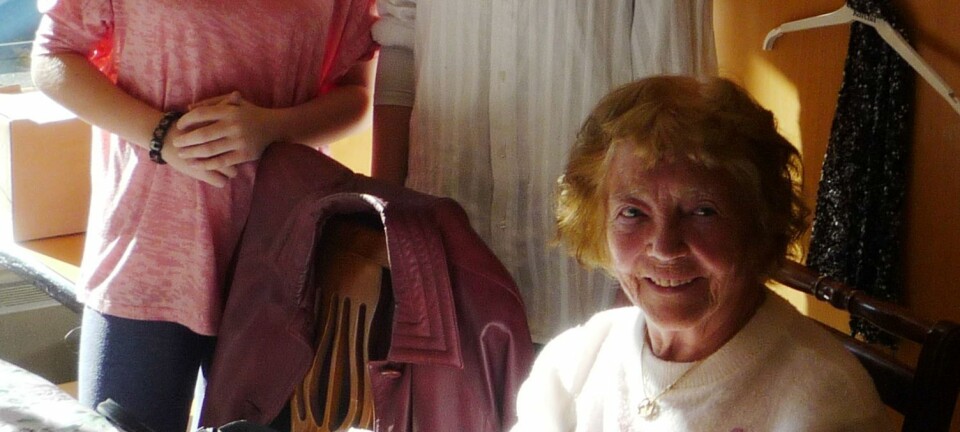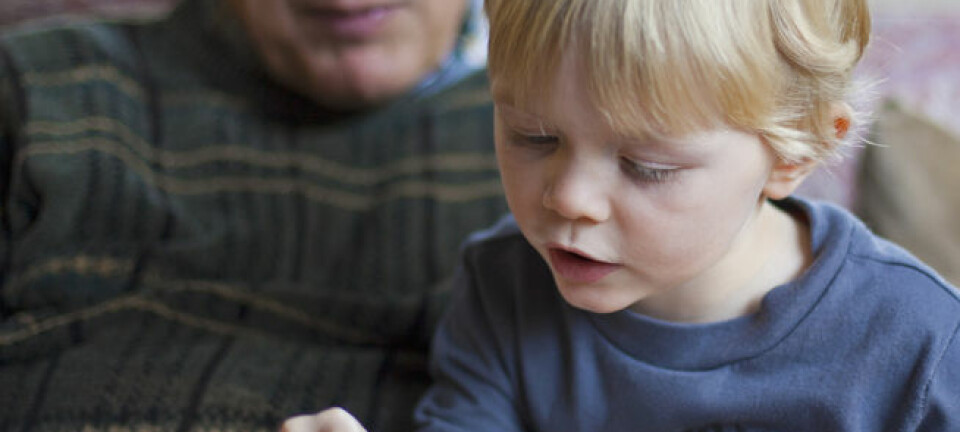An article from Norwegian SciTech News at SINTEF

Better care for the elderly with just one click
A large touch-screen at a safety unit in the Norwegian municipal Bærum, is the engine driving a new information system that facilitates information flow and reduces wasted time. This is benefiting the municipality's staff and its elderly residents.
Denne artikkelen er over ti år gammel og kan inneholde utdatert informasjon.
Norwegian municipalities are looking for new solutions to meet the care challenges of the future, and the kind of technology that can improve the lives of the elderly is fast arriving.
Bærum is the first municipality to test the large touch-screens and whiteboard technologies now being used at several hospitals. These provide an overview of what is happening in the unit at all times, and are used to support decision-making.
The system also allows updated information to be shared with the various municipal departments at all times. Eventually it should also be possible to share this information with partners such as emergency medical centres and hospitals.
"When users are admitted to a municipal safety centre, a huge amount of data exchange is involved, and since they only stay for a short time, there is a constant stream of patients in and out of the units", says Ingrid Svagård at SINTEF ICT.

"All of these work processes mean that there is an enormous need for better IT support and improved information flow, and this is where the information board comes in", she says.
Massive flow of information
Researchers at SINTEF and the company Imatis are working with Bærum municipality to streamline the work of its staff and make them more efficient. Since the summer, researchers have been testing out the pilot screen, which has worked well. Now the plan is to run the pilot for a year, evaluating it continually.
"The Dønski Safety Unit is a service for elderly people living in their own homes and generally able to manage, but who for various reasons occasionally find it hard to cope", says Liv Heidi Svenberg, head of the unit, who goes on to say that three of the places in the unit are emergency places managed by home services, while another three have been made available to emergency doctors as part of a trial project.
Staff must admit patients and discharge them. They also have to manage a range of tasks, such as assigning and preparing rooms and ensuring that the residents' meals, medication and future care arrangements are taken care of. All this must be coordinated with relatives, home services, bed managers, emergency medical centres and hospitals.
A better overview
The 50-inch screen in the nurses' room now displays information about the status of all rooms, who is waiting to be cleared, and which new patients are expected that day. The various room types are entered using codes, and it is mainly codes and dates that appear on the screen.
"We are struggling a little with the technology, since we can only use one finger and not two, but we have been finding our way around and have already noted some huge advantages with the system", says Liv Heidi Svenberg.
"The screen has plenty of space, and we now have a completely different overview than before. For example, a single click gives us an overview of all the rooms. Also, if the emergency doctor phones, we can see with one click that two patients are leaving the next day and that we have places available".
"But this requires you to enter the information yourselves?"
"Yes, but whereas we used to scribble on various forms and lists that were hidden away in files and folders, now we enter everything on the big screen. And the great thing now is that we will soon be able to enter information directly from our PCs, meaning that we can send information from other rooms. The plan is for the emergency doctors to get their own screen and simply send over the information about users they want to send over to us. That way, we are informed immediately – the flow of information completely changes and becomes automatic", says Svenberg.
Saving time
Much of the communication at the Safety Unit at Dønski, both internally and with the other parties, is by telephone, or patients may bring their paperwork with them when they arrive.
"For example, the emergency doctor needs to know when beds are available, while we at the unit need to know when patients are arriving. We write things on lists and struggle to keep these constantly updated".
The Dønski Safety Unit will try to measure how it spends its time, and thereby find out how much wasted time is being saved, such as time spent on hold on the telephone. We also hope to keep track of patients' stays, ensuring that patients are discharged at the right time, thereby optimising bed usage.
A central operations room?
The long-term ambition of Bærum municipality is to set up an operations centre for people living at home in the region, which is why the other unit in the building complex – Dønski Serviced Housing – wants to test whether the Imatis system is capable of operating as this kind of centre.
"Dønski Serviced Housing has 81 apartments connected to the treatment centre. Many of the residents here already receive services from the municipality, and need regular supervision and observation", says Jannike Nyiredi, head of this unit.
An operations centre would need to be able to receive notifications or alarms from various sensors. For example, are the patients at home or elsewhere? Are they in a situation in which they are at risk?
"We want to develop a safety package containing various sensors for the residents, such as GPS and fall alarms, and we want to display the sensor alarms directly on the screen so that we can monitor the users effectively", says Nyiredi.
New infrastructure for the municipalities
"We are now looking at the first stages of a new infrastructure that will improve collaboration and ensure that the users in the municipalities are better monitored", says Ingrid Svagård of SINTEF.
"This is an essential factor in the provision of good health and care services. What is being done here in Bærum could act as a guide to other Norwegian municipalities intending to start using welfare technology".
Translated by: Glenn Ostling
































